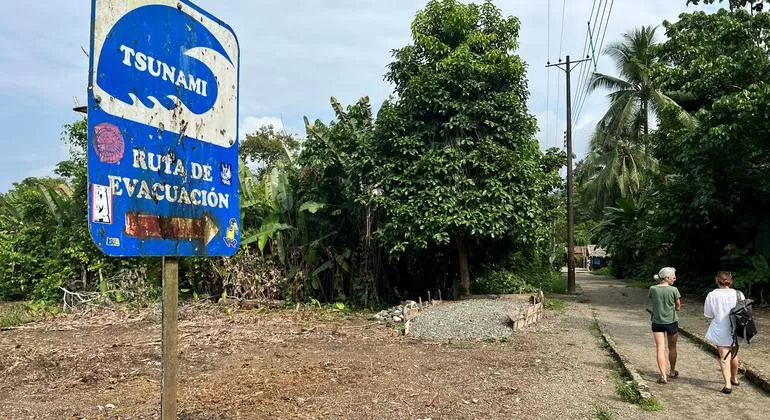
UNITED NATIONS, July 30 (WSH) — An 8.8-magnitude earthquake off Russia’s Kamchatka Peninsula sent powerful sea surges across the Pacific overnight, triggering a sweeping tsunami alert that tested and showcased the strength of the global early warning network, UN disaster experts confirmed Wednesday.
Rapid Alerts, Swift Evacuations
The quake, one of the ten strongest ever recorded, set off tsunami alarms within minutes across coastal communities from Japan to South America. The UN Office for Disaster Risk Reduction (UNDRR) reported that Japan’s early warning system immediately advised evacuations to higher ground as waves measuring 1.3 metres (4ft 2in) struck the country’s northern coast.
Although Japanese authorities have since downgraded the threat, they urged residents to remain in shelters until the risk from continuing sea surges subsides.
“It is very complex; we are observing the tsunami data in real time, so we need people to stay at the shelter until the tsunami is completed,” said Professor Fumihiko Imamura, a tsunami engineer at Tohoku University.
Memories of Past Disasters
The tremors have revived painful memories of Japan’s March 11, 2011 Tohoku earthquake and tsunami, which killed over 18,000 people and triggered the Fukushima Daiichi nuclear disaster. Last year’s Noto quake, which left 500 dead and damaged 150,000 homes, underscored the ongoing vulnerability of the island nation.
The International Atomic Energy Agency (IAEA) confirmed no damage to Japan’s nuclear facilities after the Kamchatka quake.
Global Reach of a Silent Threat
The seismic shock sent alerts rippling across the Pacific Rim, from the U.S. west coast to Chile, Mexico, Papua New Guinea and Vanuatu.
“A magnitude 8.8 earthquake is a very large earthquake,” explained Kamal Kishore, Special Representative of the UN Secretary-General for Disaster Risk Reduction. “As you go from magnitude seven to eight or eight to nine, the strength increases exponentially. An eight versus a seven is 30 times bigger.”
Kishore emphasized that tsunamis can travel “faster than a passenger jet,” carrying enormous energy over thousands of kilometres before crashing onto distant shores.
Technology and Multilateral Action
The UN-backed global tsunami warning network relies on deep-sea pressure sensors connected to surface buoys, which relay data to satellites and national weather centres.
“Tsunami prevention really highlights how important it is to have multilateral action,” Kishore said. “Countries separated by thousands of kilometres are affected by the same hazard. Without sharing data from the ocean’s intermediate locations, we cannot effectively warn our citizens.”
Early Warnings for All
The coordinated response reflects the UN Secretary-General’s Early Warnings for All initiative, aiming to ensure universal protection from hazardous weather and climate events. Currently, one in three people worldwide — mainly in least developed countries and small island states — lacks access to adequate multi-hazard early warning systems.
The Intergovernmental Oceanographic Commission of UNESCO plays a critical role in standardizing tsunami-tracking instrumentation across nations, ensuring global consistency in modelling and alerts.
Lessons Learned, Lives Saved
While the full impact of the Kamchatka quake is still being assessed, experts say the swift alerts and orderly evacuations have already demonstrated the value of two decades of investment in international early warning systems.
“The Indian Ocean tsunami of 2004 taught us in the hardest way possible that no country can stand alone against such forces,” Kishore said. “Today, we are seeing the dividends of global cooperation — and lives saved as a result.”

